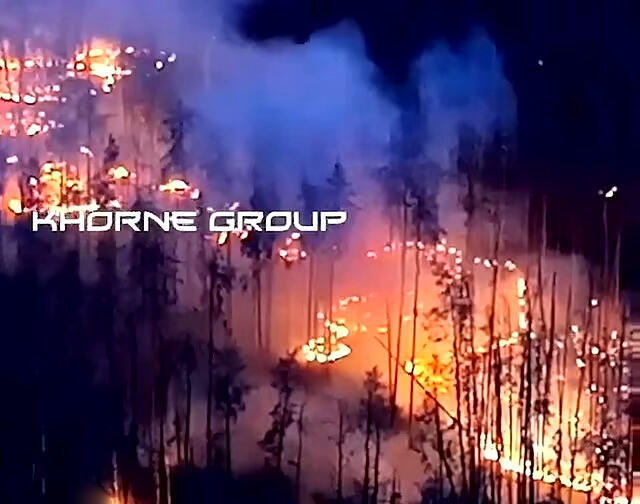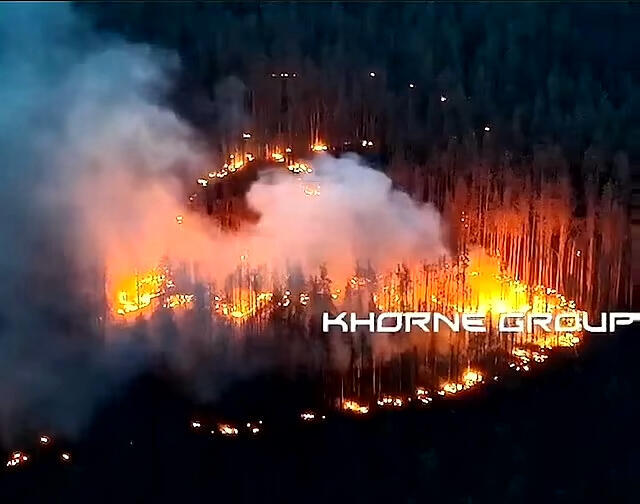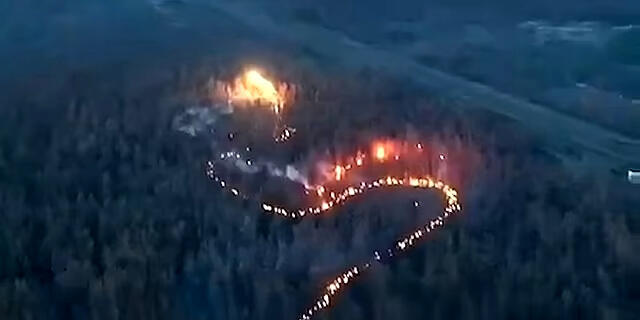Getting your Trinity Audio player ready...
Ukraine unleashes dragon drones on Russian forces
Dramatic videos released last week show Ukrainian forces a fleet of drones, dubbed dragon drones, spewing molten metal on Russian troops in eastern Ukraine's forests.
The white-hot mixture of aluminum powder and iron oxide, called thermite, burns at temperatures of up to 4,000℉ (2,200℃). It can quickly burn off trees and vegetation giving cover to Russian troops, if not killing or disabling the troops outright.
While Russia has used thermite bombs throughout the war, they have typically been deployed via rockets or cluster bombs at a much higher cost. The Ukrainians have now developed a cheaper, more precise method by attaching these bombs to drones, according to reports in the Daily Mail.
In one video, a drone is seen flying over a forested area in eastern Ukraine, where Russian forces are hiding. The drone operator drops a thermite bomb, sending white-hot sparks into the Russian positions below. Additional footage released by Ukrainian forces followed shortly after.
"Our drones are the wings of our revenge, delivering fire from the sky," said the Ukrainian armored battalion that shared one of the videos on Facebook. "They pose a real threat to the enemy, burning their positions with precision unmatched by other weapons."
Thermite munitions are capable of damaging Russian artillery batteries and armored vehicles, even melting steel. Days after the Ukrainian videos surfaced, an unverified clip appeared on Telegram, showing a Russian soldier pleading for help after his camp was devastated by a similar Ukrainian strike.
Meanwhile, CNN reported Friday on a graphic video showing the execution of three Ukrainian soldiers who had surrendered during fierce fighting near the strategic city of Pokrovsk in eastern Ukraine. Moscow aims to capture the city to eliminate Ukrainian resistance in the Donbas region, as Russian forces struggle to fend off Ukrainian advances in the Kursk region.
The execution, filmed by a Ukrainian military drone in late August, shows the three soldiers kneeling with their hands behind their heads before they fall lifeless to the ground, likely after being shot. CNN described the footage as evidence of Russia's brutal tactics in its determined push for eastern Ukraine, while refraining from diverting significant forces to counter Ukraine’s incursion into Russian territory in Kursk.
Meanwhile, Ukrainian President Volodymyr Zelensky claimed Friday that around 6,000 Russian soldiers have been killed or wounded in Kursk since the Ukrainian offensive began on August 6. Zelensky said Ukrainian forces now control over 500 square miles in the region, including 100 settlements, much of which was reportedly abandoned by retreating Russian troops.
The Wall Street Journal also reported that Iran has supplied Russia with short-range ballistic missiles, deepening Tehran's alliance with Moscow. European officials told the newspaper that despite stern warnings from the West, Iran has sent the missiles to aid Russian President Vladimir Putin's war in Ukraine, raising concerns about what Iran may receive in return.
While the White House did not confirm the report, it warned that any missile shipment from Iran to Russia would be a "dramatic escalation" of Tehran's support for Moscow. In response, Iran's UN delegation denied the claim, saying, "We do not supply weapons to either side in the conflict and call on others to do the same and support peace negotiations."







